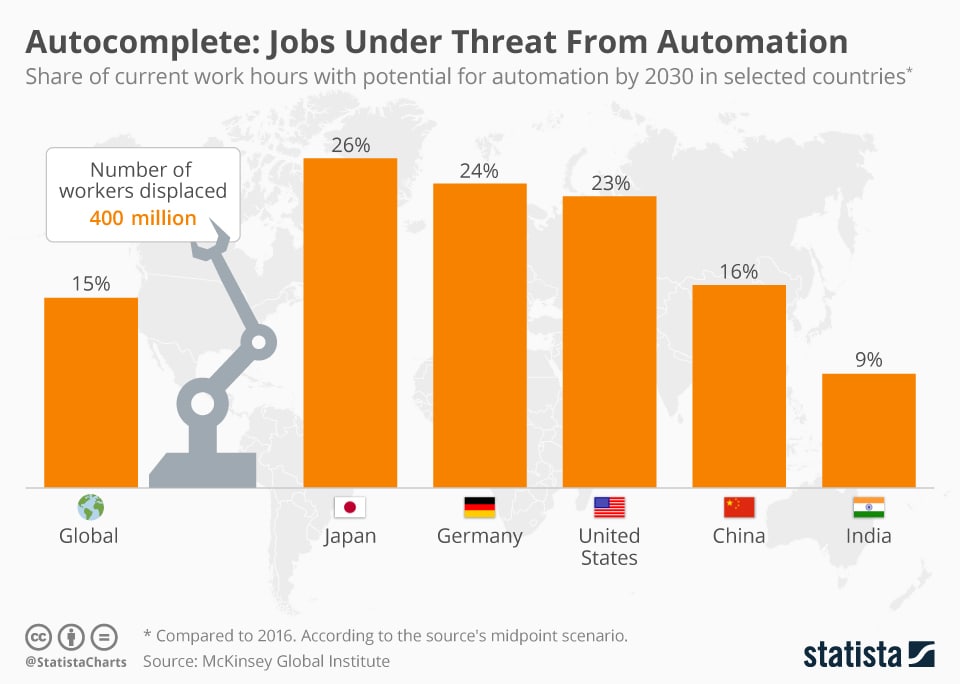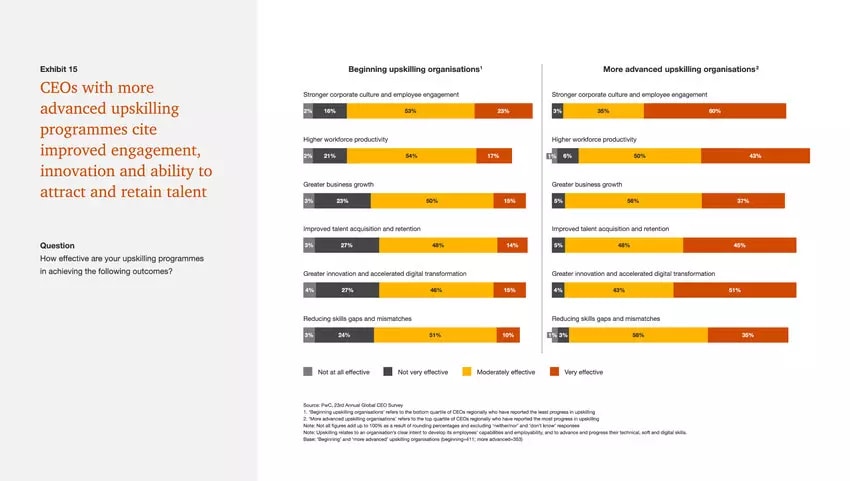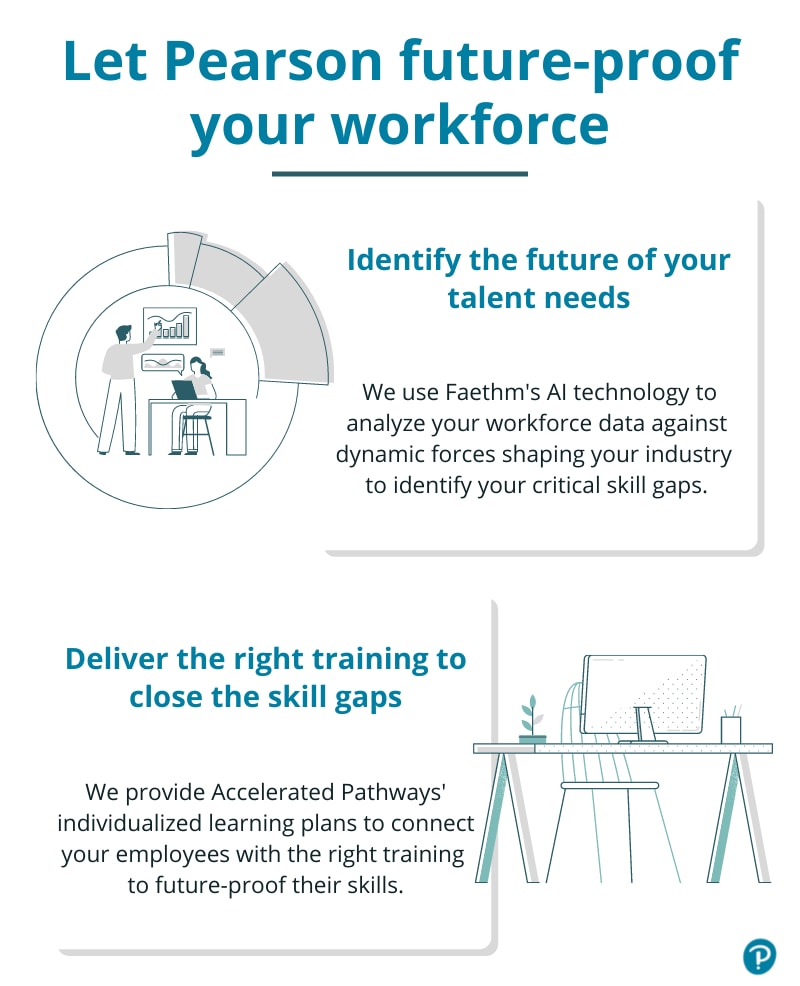Reskilling: Key to Business Survival

Worried about digital disruption affecting your industry? Between automation, artificial intelligence, emerging technology, growing e-commerce and the evolving distance economy, there has never been a more critical time to prepare for the future. Rapidly advancing technologies are having an enormous impact on the way businesses operate and interact with their customers, and the ability to keep up with this digital transformation can either make or break an organization.
In particular, reskilling talent for the future is becoming more critical to business success. According to a report by McKinsey Global Institute, automation could take away 15 percent of all global work hours from humans by 2030, leaving around 400 million workers displaced.

Other reports indicate that half of the work done by humans globally can be automated, with up to 30 percent automated by 2030. This statistic may vary from country to country depending on factors such as speed of automation, but it is becoming increasingly clear that employers will need to keep pace with fast technology shifts in order to survive the evolving marketplace.
Skill needs are changing fast
To succeed, employers will need to identify critical skill gaps in their workforce. There are several approaches companies can use to weigh their current skills against future demand. One method, employed by our partner Faethm, uses artificial intelligence to help companies clearly understand the future of their talent needs. By collecting a diverse cross-section of employer data, Faethm analyzes various data points against multiple dynamic forces shaping an industry’s labor market—from technological disruption to economic shocks. This allows the organization to understand which jobs can be automated, which can be contracted, and which need to be performed in-house.
This latter category (jobs that need to be performed in-house) is typically the one targeted by employers for reskilling. In fact, filling skill gaps has become a top priority for many human resource departments, even more so than acquisition of new talent, as companies have found that reskilling is no longer a trend, but a survival strategy. To sustain a company’s growth, employees need to receive the right training in the right areas so they can adjust to coming technology shifts and remain competitive.
Employees value companies that offer these types of training opportunities as it allows them to develop their careers, improve job security and increase financial compensation. According to the U.S. Bureau of Labor Statistics, over one million workers are projected to be displaced in the next decade due to advancing technology. These workers may be reskilled to new viable and desirable growing roles at an average cost of $24,800 per displaced worker. While this may seem like a steep price, there’s an even steeper price to inaction.
How to keep up
The latest Global CEO Survey found that CEOs who have embraced upskilling and reskilling see the rewards through gains such as higher workforce productivity and innovation. Employers also understand that the money they put into workforce training is a financial and social investment. The focus on reskilling employees for jobs of the future is instrumental. A new report found that a 10% improvement in global social mobility would boost economic growth by nearly 5% over the next decade.

While most companies understand the need to reskill, they struggle with either not knowing how to identify skill gaps or how to go about launching an effective learning program to address their skill gaps. According to McKinsey, reskilling efforts need to be practical with a real connection from the training to the new job. Many companies don’t know how to connect the dots between workers’ current skills and the skills they’ll need in the future. In this case, it can be beneficial to seek outside expertise and hire the right people to oversee reskilling efforts.
Pearson Workforce Skills division offers just the solution – in a two-step process. First, using Faethm’s expertise and technology, we conduct a skills gap analysis to provide organizations with better insights into what future needs are most in-demand for their industry. This helps organizations to identify competencies lacking and create an overall strategic skills roadmap to address the skills gap. Second, Pearson Accelerated Pathways targets individualized learning plans that connect employees with the proper educational pathways to gain the skills needed for the organization’s future success.

By helping organizations address critical skill gaps by first identifying market needs and then by providing training adjacent to the skill needs, we’re able to comprehensively help companies future-proof their workforce and remain competitive in a rapidly evolving technology landscape. Ready to survive and thrive in the age of digital disruption? We can help you keep your workforce prepared. Reach out to learn more!
